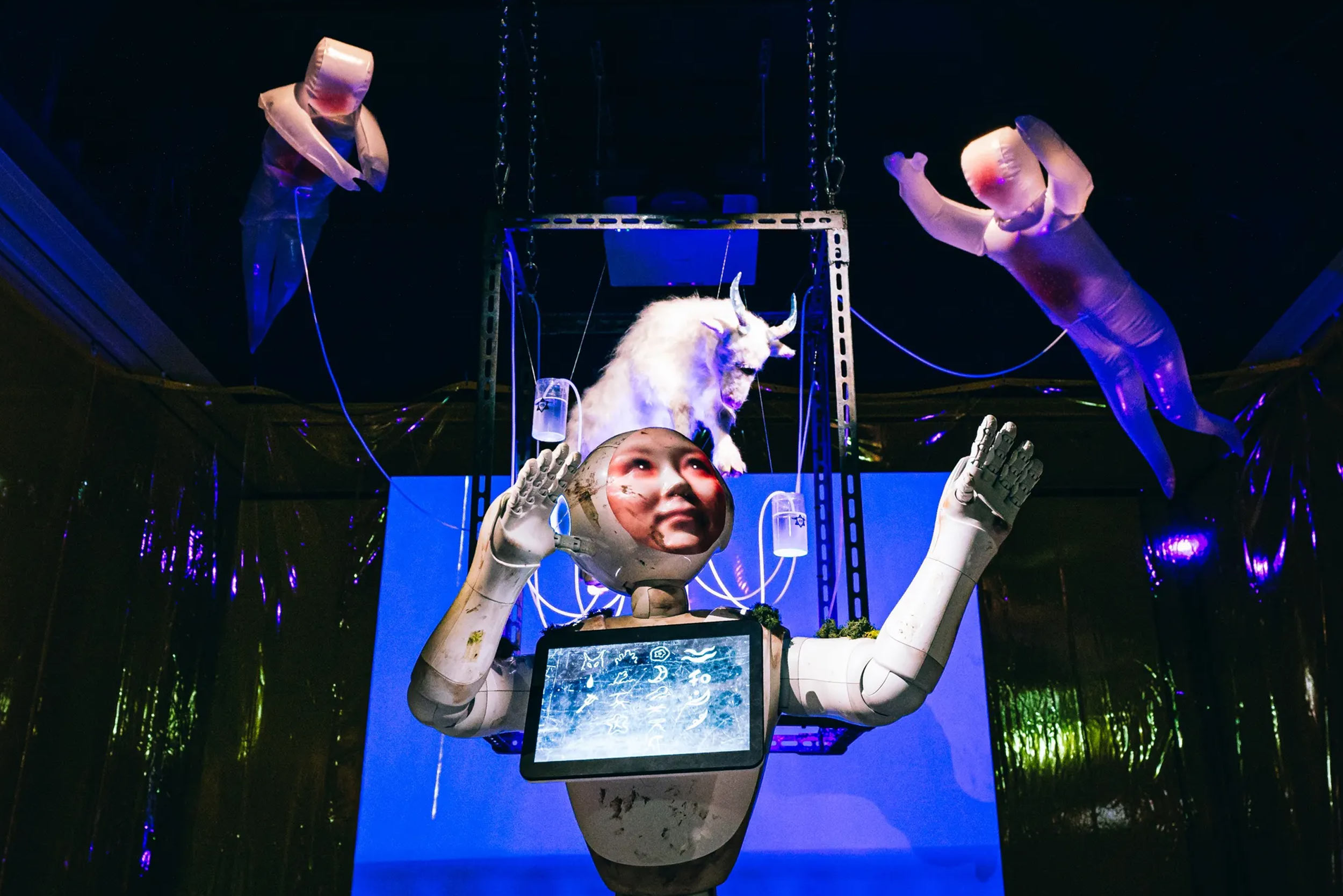Art transforms uncertainty into creative energy and opens up new perspectives on society and the future. The Ars Electronica Festival 2025 shows how artistic works reflect technological, social, and ecological upheavals.
Many artists consciously seek new paths instead of clinging to old habits. For them, uncertainty is not an obstacle but a source of inspiration. Change and chaos are not feared but used as opportunities to discover new ideas and create the unexpected. Especially in times of uncertainty, as addressed by this year’s Ars Electronica Festival, artistic perspectives show how productive dealing with the unknown can be.
The Raqs Media Collective describes it this way: Ideas rarely have a fixed course. They change as they traverse the world and can take surprising directions. This openness makes it possible to gain new perspectives and unleash creativity, even in times of upheaval.
Of course, plans and goals can be helpful. But in a world that is constantly changing, they must not become rigid rules. Courage and openness help us to let go of outdated views and make room for the new.
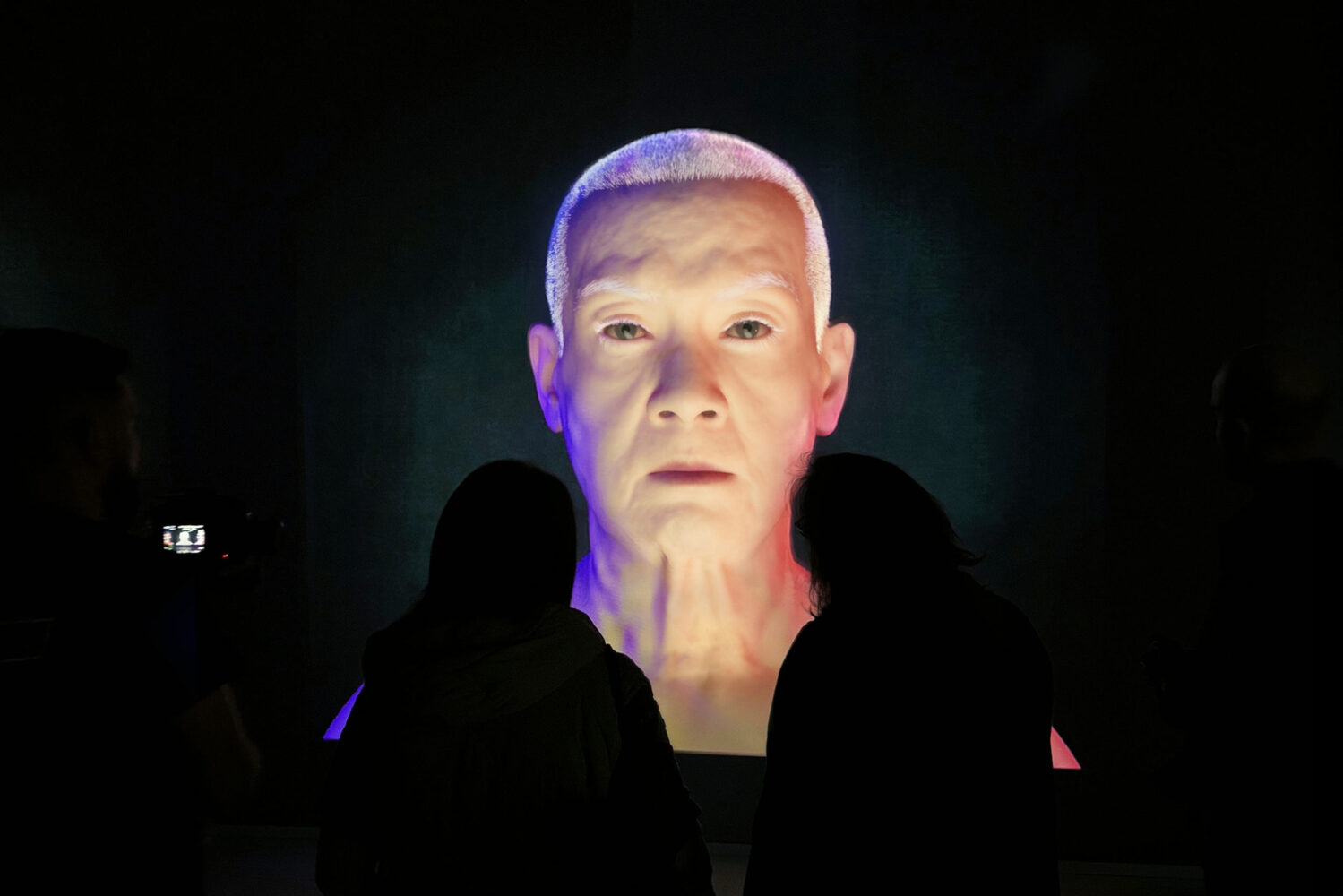
The diversity of artistic approaches is crucial here: clear analyses stand alongside poetic moments, concrete concepts alongside bold speculations. Art creates spaces in which we can leave constraints behind, see the world differently, and develop our thoughts freely.
Whether literature, visual arts, music, or film—art shapes our collective memory, influences our view of the present, inspires our visions for the future, and questions supposed certainties.
Requiem for the future
We live in a world where we have a certain amount of leeway in dealing with technologies such as AI and robotics, as well as with scientific knowledge and data. Artists challenge us to reflect on this with their astute questions. This raises not only the question of our role as mere spectators, but also the question of the vision with which a society can identify—and how responsibility for the future can be assumed.
Every year, the central exhibition of the Ars Electronica Festival showcases extraordinary works that shed light on current technologies and social issues from an artistic perspective, sometimes as a mirror, sometimes as an intervention, sometimes as a vision. Since 1987, the Prix Ars Electronica has been considered the oldest and most important competition for media art worldwide and acts as a sensitive seismograph for the zeitgeist. In 2025, almost 4,000 submissions were received from 98 countries. The award-winning projects in the fields of New Animation Art, Digital Musics & Sound Art, and Artificial Life & Intelligence can be experienced at the Lentos Kunstmuseum Linz.
This year’s winners re-explore what it means to be human: from a planetary perspective and with visions of the future that are deeply embedded in different cultures. Amidst technological change, their works challenge us not only to think about possible futures, but to actively participate in shaping them.
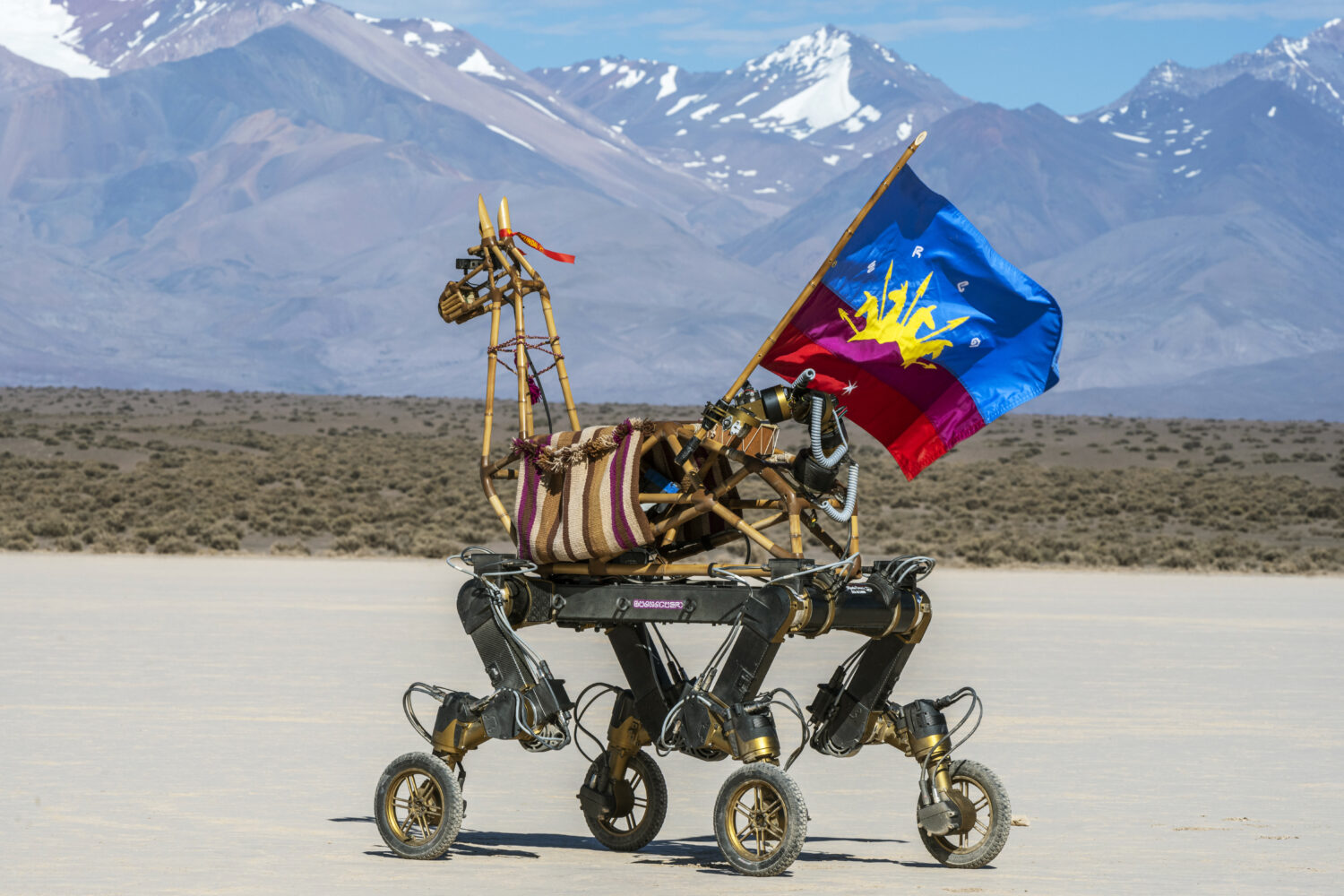
In 1817, the Andean revolutionary army under Argentine General José de San Martín undertook an unprecedented venture: 5,200 people and more than 10,000 mules and horses crossed the Andes. Their goal was nothing less than freedom. The march across 4,500 meters of altitude, through inhospitable and dangerous terrain, became one of the most impressive chapters in the Latin American independence struggles of the 19th century.
More than two centuries later, in 2024, the robot “Guanaquerx”, developed by artist Paula Gaetano Adi – accompanied by artists, engineers, local baqueanos, and 58 mules and horses – set out to retrace this historic route. But this time, it was about a different kind of liberation: a technological revolution. As a collaborative project that combines art, robotics, and traditional Andean knowledge and is deeply rooted in Andean cosmotechnics, Guanaquerx became the first robot ever to cross the Andes and challenges us to rethink technology as tools for planetary healing, liberation, and resistance.
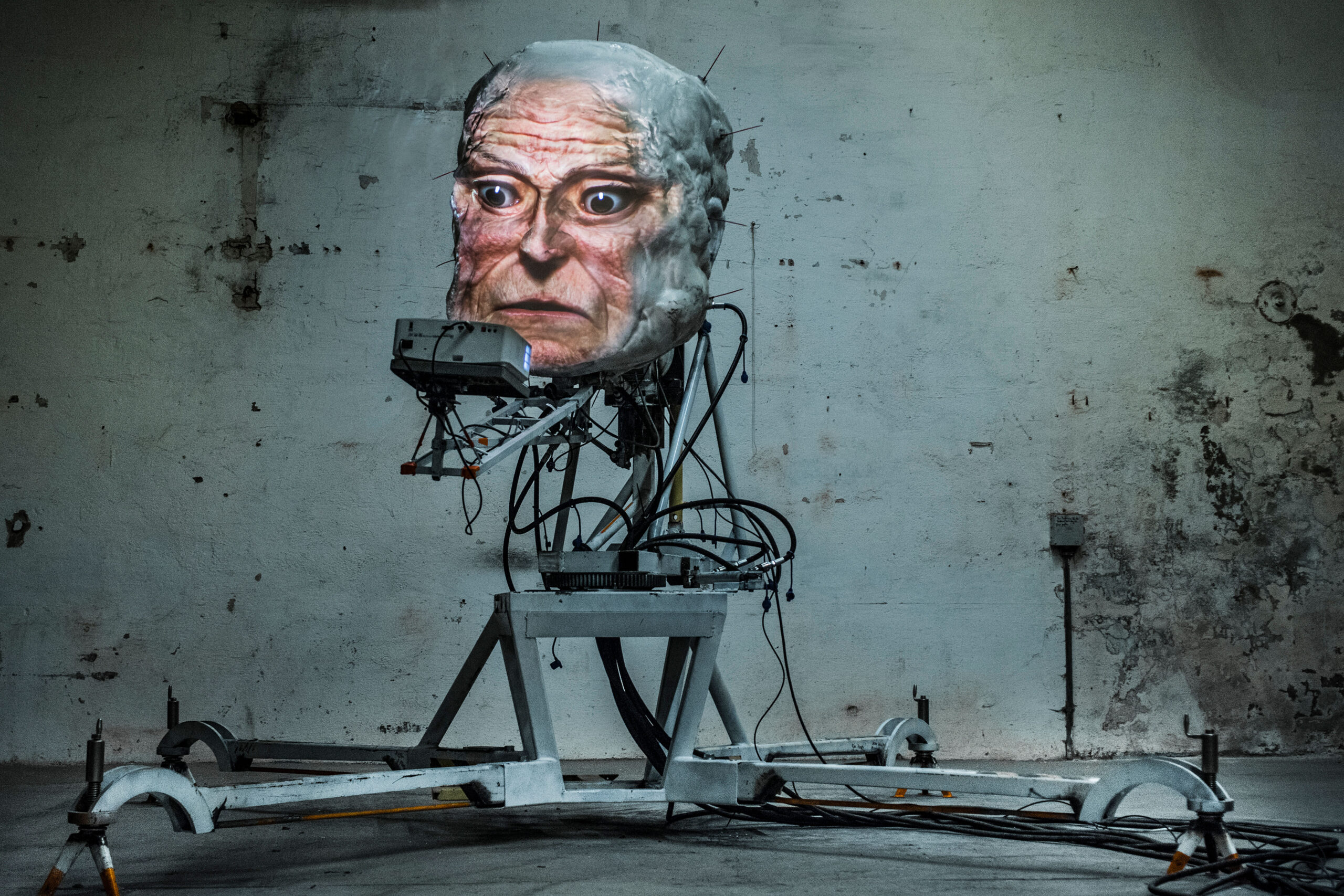
In “Requiem for an Exit,” a somewhat different robot confronts us not with actions, but with words. At the center of Thomas Kvam and Frode Oldereid’s large-scale installation stands a four-meter-tall robot—armless, immobile—whose presence is defined by a hyperrealistic projected face and a voice generated by AI synthesis and human performance. The work suggests that violence may not only be culturally conditioned, but also biological—anchored in our DNA. The audience encounters a machine fixed in place, speaking in a dense, immersive soundscape. Its monologue draws on historical atrocities, from genocides in antiquity to the Holocaust and contemporary expulsions, and asks whether such violence is a tragic exception or a recurring pattern in human history.
Rather than predicting the future, Requiem for an Exit serves as an epilogue. It questions the myths of progress and the ethics we attribute to technology, hinting at how responsibility is increasingly being outsourced to systems and codes. When the robot falls silent, what remains is a confrontation with the past we carry with us and with the future it continues to shape. Clearly, machines remember what we would rather forget.
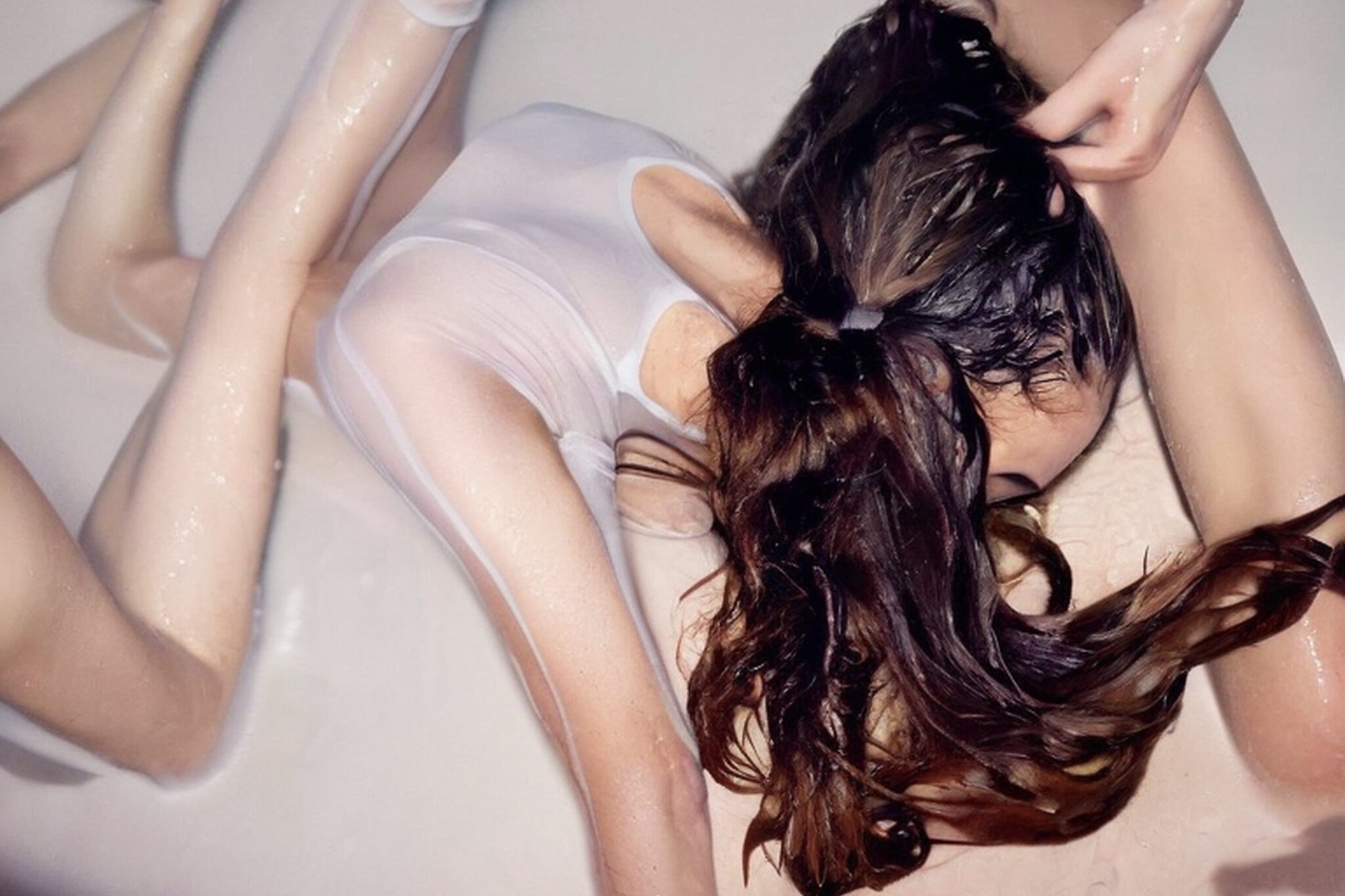
XXX Machina is an immersive multimedia installation developed by Erin Robinson and Anthony Frisby that explores how artificial intelligence is profoundly changing our understanding of eroticism, intimacy, and identity. At its center is an “autonomous desire machine” that uses recursive diffusion models to generate synthetic erotic images—deepfakes of the artist’s face, fed by AI porn data.
What initially appears to be classic pornography turns out to be disturbing: fragmented bodies, eerie assemblages, physical impossibilities. XXX Machina deconstructs desire—between lack and simulation, between flesh and algorithm. Drawing on Lacan, Bataille, and poststructuralist theory, the work asks how AI is changing the conditions of sexuality. What happens when lust becomes infinitely accessible? When intimacy solidifies into a data set? XXX Machina confronts us with a future in which desire no longer remains human, but is reconfigured by machines.
Art, science, and education in dialogue
The large festival theme exhibition, supported by European Digital Deal and the BMWKMS*, in the sprawling catacombs of POSTCITY brings together artistic works that highlight and critically reflect on the role of art in times of upheaval.
Calin Segal’s interactive installation Whispers examines how algorithmically curated content and digital discourse influence identities. In The Falling City, Noemi Iglesias Barrios, Radix – Knowledge Centre Data and Society, and the League for Human Rights develop an artistic AI surveillance system that searches for love rather than aggression in public spaces in Brussels. With Dystopia Land, Etsuko Ichihara and the Civic Creative Base Tokyo (CCBT) present a participatory exhibition project that creates a dystopian parallel universe to reflect on alternative futures, ways of life, and collective resilience.
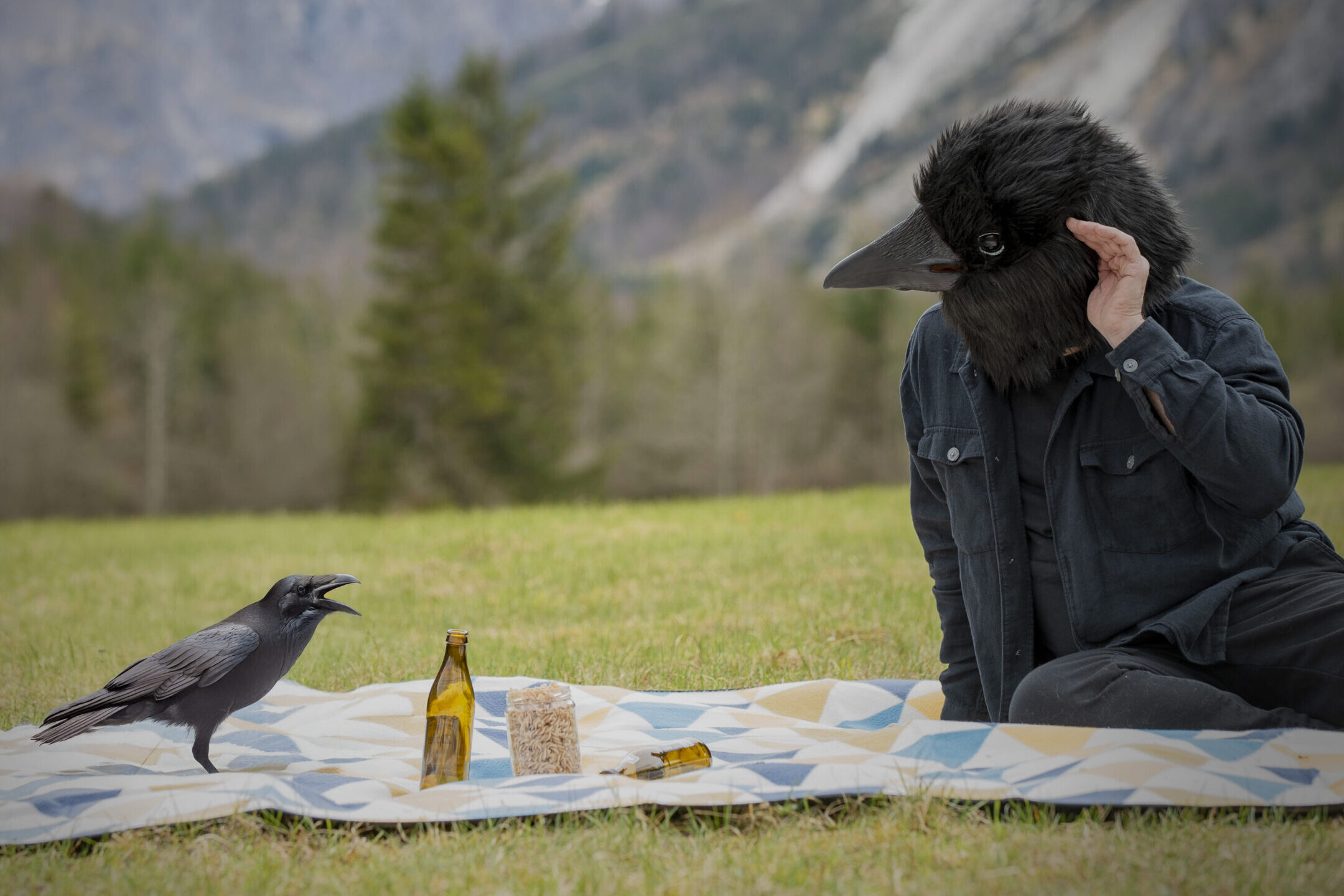
Also in POSTCITY, the Ars Electronica Futurelab presents Corpus Corax, a speculative, interactive experience that immerses visitors in the communication of ravens. Based on everyday interaction scenarios such as a conversation over dinner, the project explores unusual forms of communication between species. The Human-Raven Translator (HuRT) experiments with real-time translation of raven calls, based on data from the Konrad Lorenz Research Center. Corpus Corax raises fundamental questions about language, intelligence, and human perception.
For over two decades, the University of Art and Design Linz has been a key partner of Ars Electronica. In 2025, it will once again showcase works from 14 different departments. The projects will be on display in the two bridgehead buildings and on Linz’s main square. The splace gallery on the main square will host the National Academy of Art Sofia, this year’s featured university. Its exhibition “/decisions/make/art” reframes artistic creation as a logic of choice, reaction, and systemic thinking. With interactive installations, generative systems, and experiments with machine learning, the students explore how aesthetic expression transforms into a field of ethical negotiation.
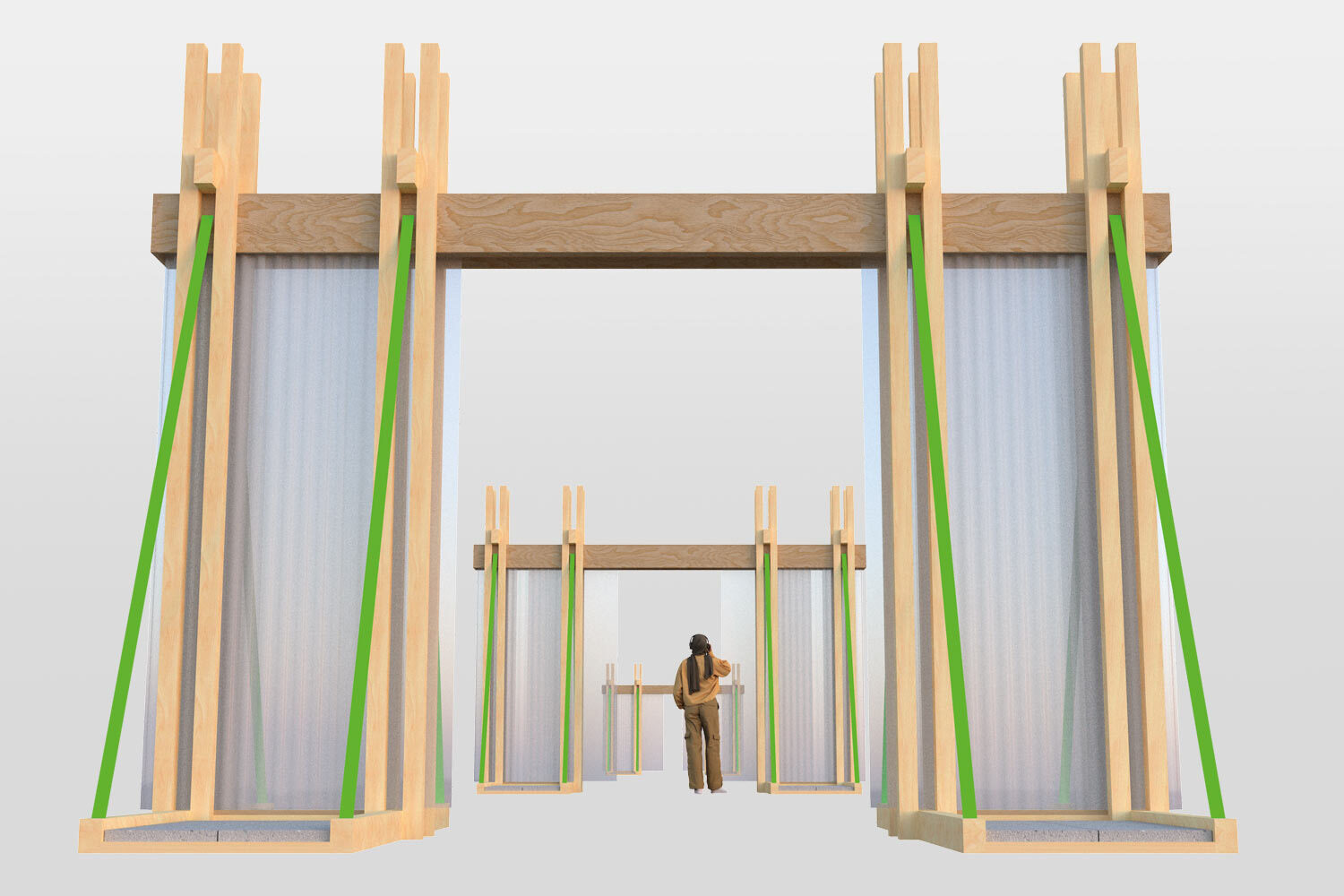
The campus exhibition, on display at POSTCITY, features 37 contributions from universities around the world that address the changing role of creative education in a time of global instability and constant change. It reflects on the significance of artistic education today—and the responsibility it assumes for the future.
As a further contribution to Campus, the exhibition Expanded Play is dedicated to the creative potential of digital forms of play. In a collaboration between the University of Applied Arts Upper Austria, Masaryk University, and the Film Academy Baden-Württemberg, artistic works created at the intersection of interaction, narration, and game mechanics will be shown at the Salzamt. They explore how game structures can be used as a form of expression and what new narrative spaces this opens up.
Between politics, panic, and perspective
Art and culture operate in the field of tension between current crises and economic, technological, social, and political developments. This is precisely where their particular strength lies: they offer space to question the conditions of our present and help shape change.
To mark the 30th anniversary of Austria’s accession to the EU, a two-day conference as part of the Ars Electronica Theme Symposium in collaboration with the Austrian Federal Ministry of Housing, Arts, Culture, Media, and Sport will be dedicated to the topic of “Reimagining Europe’s Future.” The focus will be on the politics of the European Union and the question of what role art and culture can play in shaping future social developments.
The second day of the conference is entitled “Crossing Borders: Art and Culture Against Panic.” The focus is on the positioning of art at the intersections of different disciplines—as a place of collective and individual meaning-making, as a medium for translating complex contexts across disciplinary boundaries.
The conference will examine how EU funding programs—such as NEB, STARTS, EIT, Horizon, and Creative Europe—strengthen artistic practices and how cultural perspectives can in turn influence political processes. In subsequent discussions, artists will discuss the political dimensions of their work: as commentary, criticism, or direct intervention in public space.
The afternoon will focus on another central theme: the role of art in dealing with individual panic, mental health, and medical education. Together with the Open Innovation in Science Center of the Ludwig Boltzmann Society, EIT Health and EIT Culture & Creativity, medical professionals, artists, researchers, and policymakers will discuss how interdisciplinary approaches can open up new avenues in healthcare and medical research.
Digital compost
Digital data is often considered intangible and harmless, seemingly detached from the physical world. In fact, however, it is based on vast infrastructures that consume enormous amounts of energy, water, and raw materials, emitting heat and CO₂ in the process. “Computational Compost” by architect and researcher Marina Otero Verzier responds to these invisible impacts and explores how the energy requirements of digital systems can be redirected to support ecological processes rather than burdening them.
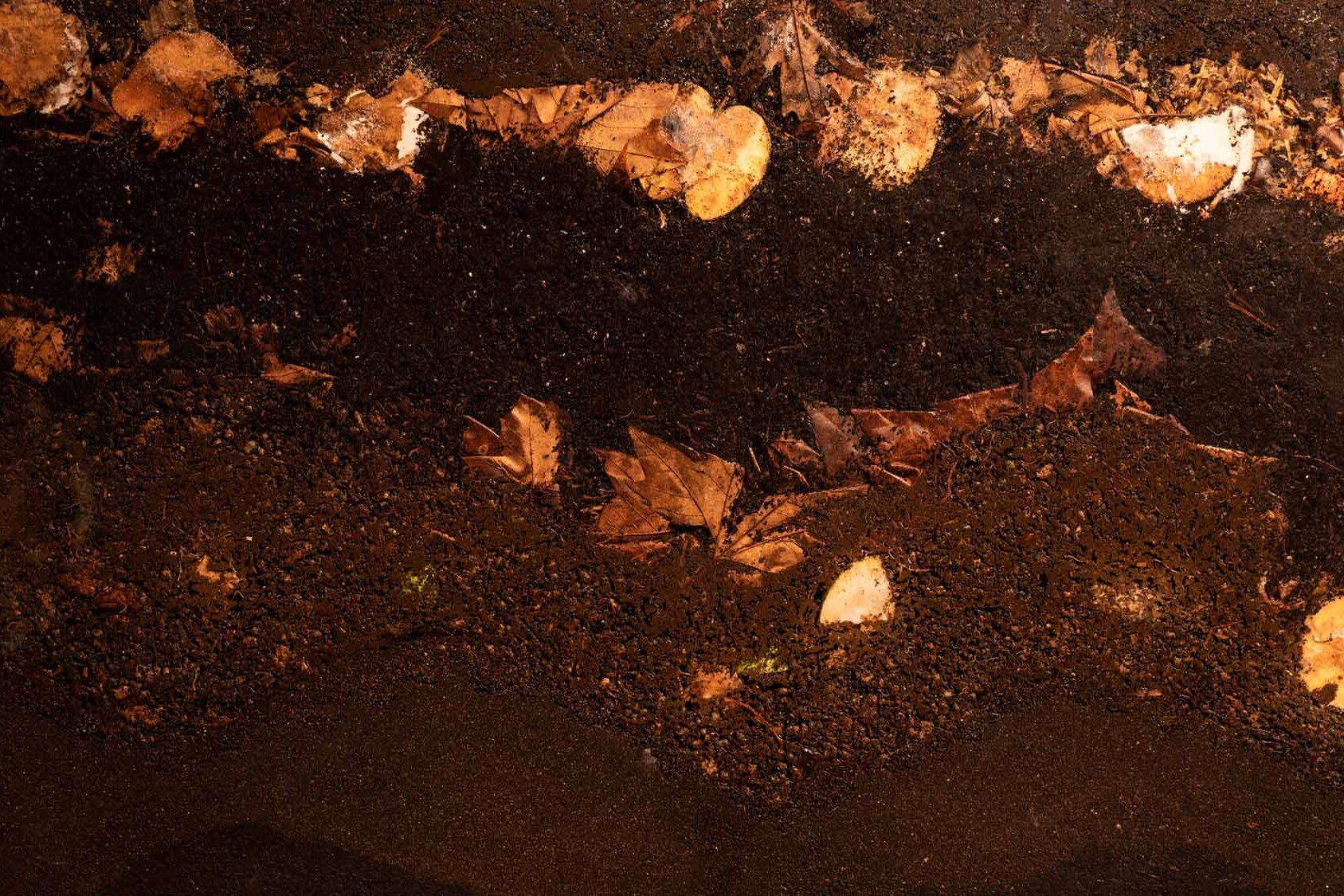
The project, which received an Honorary Mention as part of the S+T+ARTS Prize 2025, is part of the S+T+ARTS Prize Exhibition “Navigating Uncertainty.”** It presents a working prototype that uses the waste heat generated by computationally intensive simulations of the formation of the universe to power a worm composting machine. In this system, living worms and microorganisms convert organic waste into fertile soil—assisted by the heat generated by digital computing processes. The installation is complemented by a film about quipu, an ancient Inca system for recording information. Together, these elements invite viewers to imagine a future in which digital systems do not destroy, but regenerate.
Political imagery
The retrospective “Patterns and Politics” by US media artist Claudia Hart presents a multifaceted body of work that has been operating at the intersection of technology, aesthetics, and society since the 1990s. In her virtual 3D scenarios, mathematical structures, scientific models, and the visual language of the consumer world merge into complex pictorial spaces—mythologically charged, formally condensed, and critically reflected.
A simulated eye—the virtual camera—roams these digital worlds. The resulting render sequences are transformed into films, installations, pigment prints, rapid prototype sculptures, quilts, augmented reality wallpapers, and paintings. Hart’s artistic vocabulary combines scientific modes of thought with historical narratives and raises central questions about perception, the body, identity, attention, and power.

ITime and again, she brings the repressed to the fore: in her Ghost Paintings, for example, she pays tribute to forgotten female artists of the modern era or digitally disintegrates classic still lifes to reveal the fragile structures of the art canon. Her work deliberately enters into dialogue with contemporary female artists and activists, whose contributions flow into her simulations as data streams. The result is a visual network that reveals the mechanisms of cultural exclusion.
Patterns and Politics condenses the past, present, and possible futures into an ornamental, politically charged pictorial space. Visitors are invited to experience the virtual space as a sculptural experience—and to read the seemingly decorative structures as expressions of social orders.
In the spirit of Ars Electronica, this retrospective also shows that art is not only expression, but also attitude. “Art is not a thing, but a way,” as Elbert Hubbard wrote—and Claudia Hart’s work is exactly that: an artistic path through the digital age.
The Ars Electronica Festival will take place from September 3 to 7, 2025, in Linz under the theme “PANIC – yes/no.” For more information about the festival, please visit our website. An overview of other highlights in the program can be found here.
*The Theme Exhibition is presented in the context of European Digital Deal. European Digital Deal is co-funded by the Creative Europe Programme of the European Union and by the Austrian Federal Ministry for Housing, Arts, Culture, Media and Sport.
**STARTS is funded by the European Union under the Grant Agreement No 101135691.
